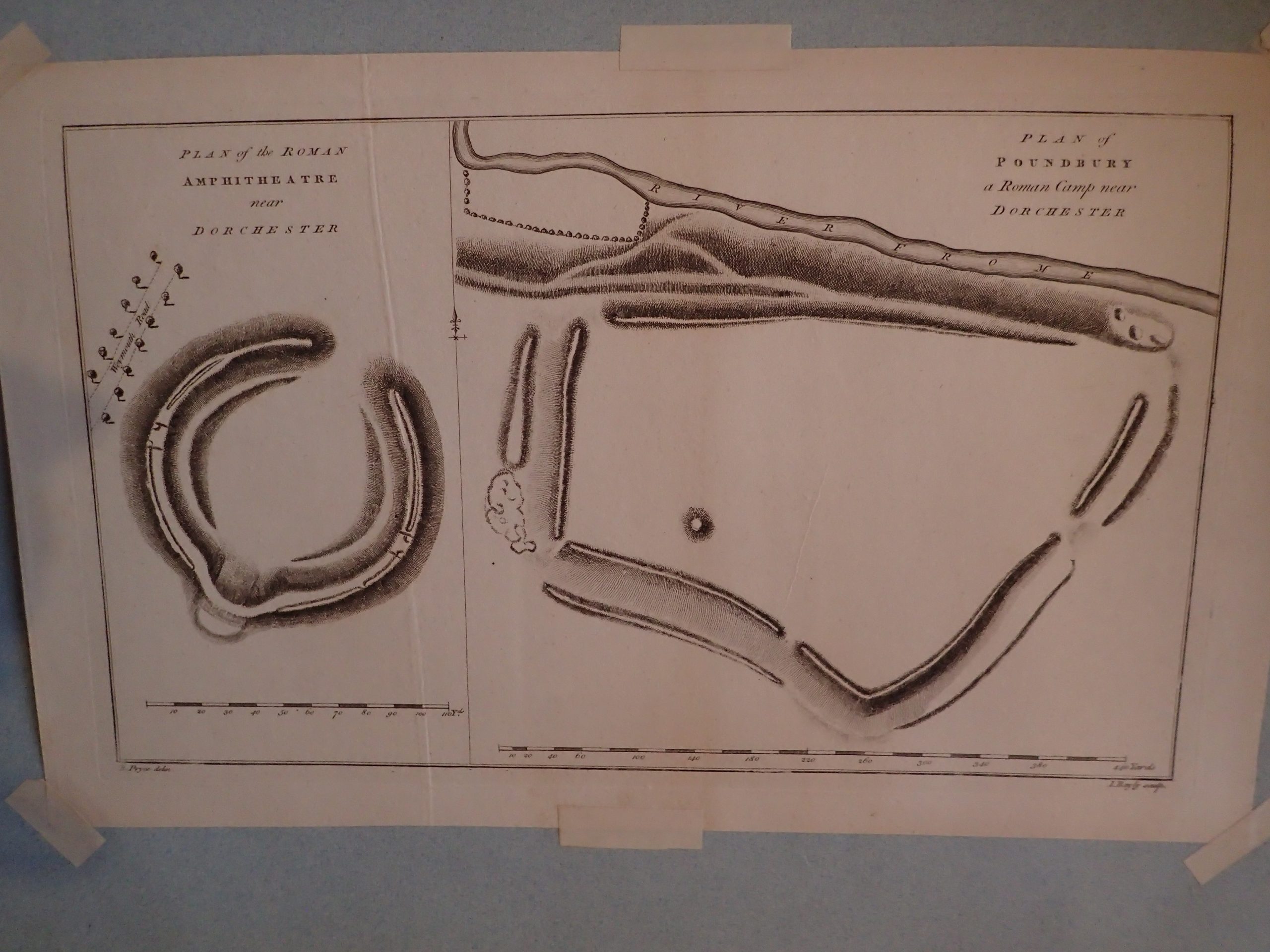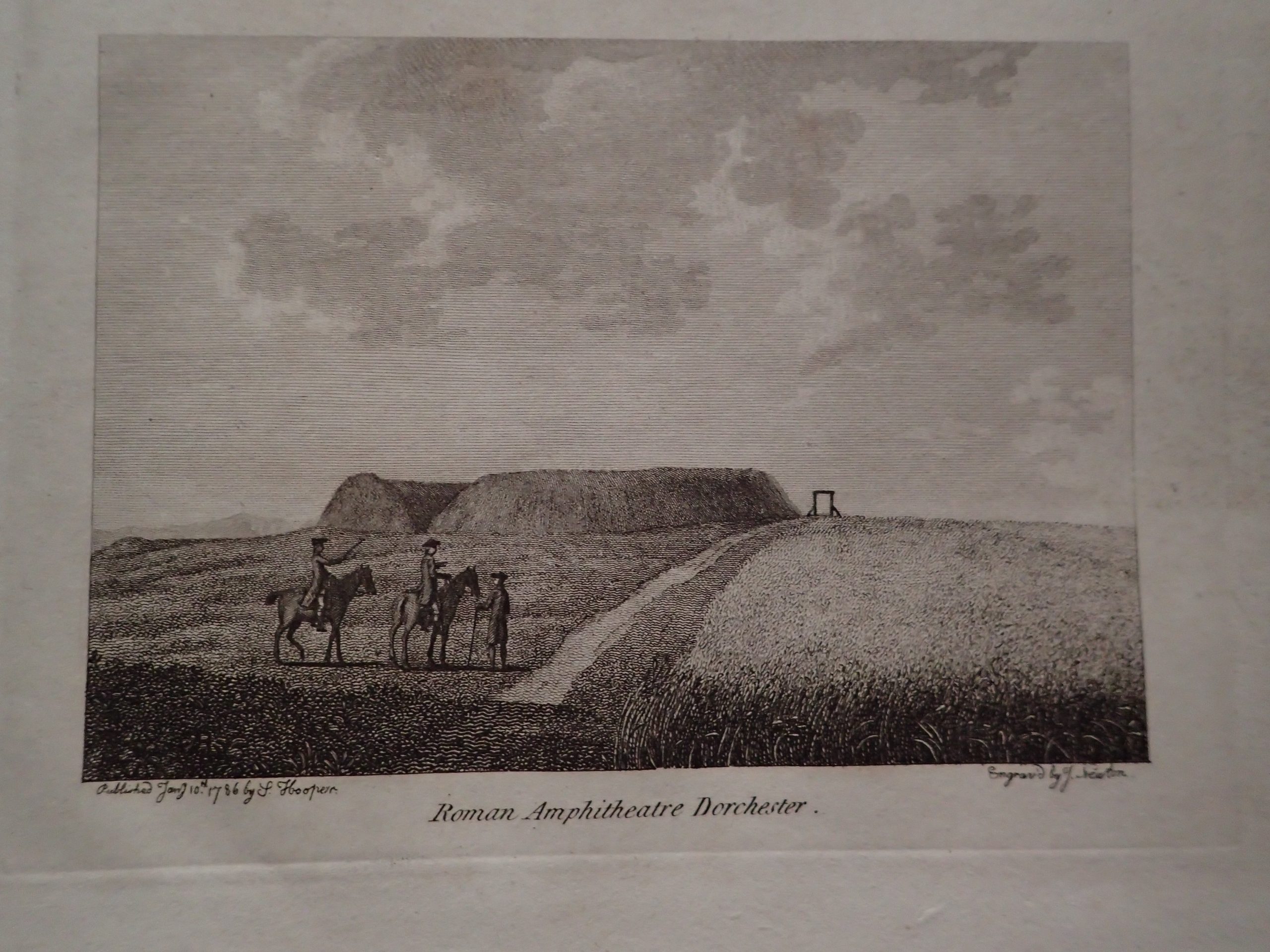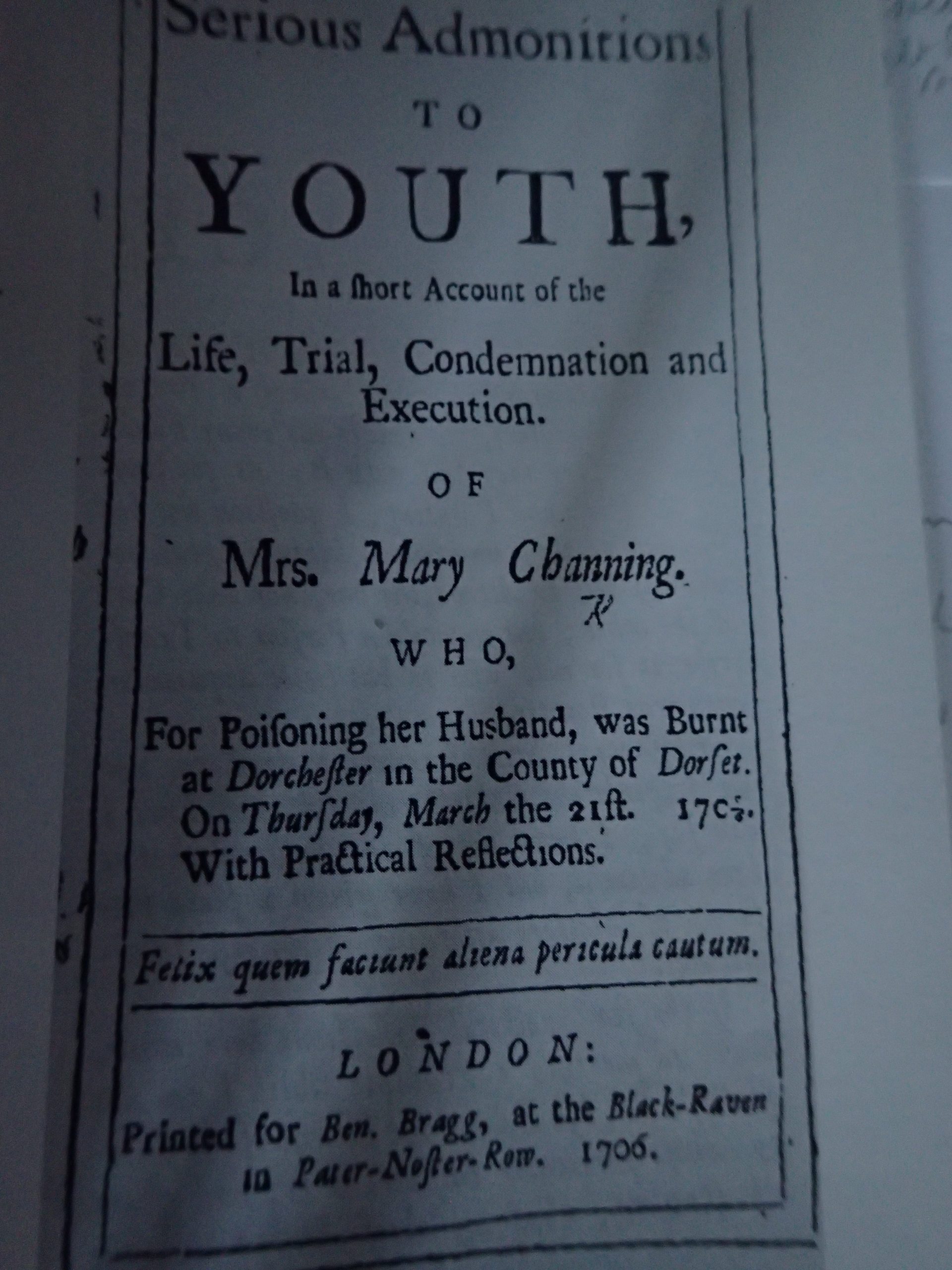By Ian Gosling, DCS Chair
Whilst manning the DCS stall during Hengefest in late July I thought about how this ancient structure has been used in different ways by generations of Dorchester inhabitants over the past 4500 years.
It was created in the late Neolithic Period in about 2500 BC by the construction of a large circular bank whose external diameter is approximately 85 m. An internal circular ditch using a series of 45 deep tapering shafts placed about 3m. apart, rising from about 10m. below ground level. Eight of those shafts have been fully excavated and were found to contain the skulls of deer and carved chalk objects representing fertility symbols.
During the first century AD the site was converted into an amphitheatre by the Roman Army. The arena was lowered by some 3m, and the earth was deposited over the Neolithic bank. It would have been capable of seating up to 10,000 people in seats carved into the banks. It would have been one of the biggest in England.
In 1642, at the beginning of the Civil War Dorchester declared that it was supporting Parliament against Charles I. As from July the Rings were fortified by its Parliamentary garrison to guard the southern approach to the town. A bulge in the earthworks on the south-west side of the earthworks of the Rings overlooking the road was created as a gun emplacement.
Towards the beginning of that century members of the gentry and intellectuals started to become interested in Britain’s ancient history and commenced mapping and excavating ancient earth works. Sir Christopher Wren is reputed to have been the first to spot the importance of Maumbury Rings when he visited Dorset to inspect quarries in Portland.
Wiliiam Stuckely wrote about the Rings in “Of the Roman Amphitheatre in Dorchester” as early as 1723. The earliest map of the structure was published in John Hutchin’s History of the County of Dorset in 1774 (Photo I).
Notwithstanding the recognition of the importance of the Rings by antiquarians, Dorchester’s place of public execution was moved from Gallows Hill, at the top of Salisbury Fields, to the Rings in 1703. There is some uncertainty about the precise site of the gallows, probably because bodies of executed criminals could be displayed on gibbets after the executions to serve as warnings to travellers and those gibbets could have been erected slightly to the south, along the Weymouth Road.
This 18th century print published in 1786 (Photo II) shows the gallows, or gibbet, just outside the rings next to the Weymouth Road.
On 21st March 1706 the nineteen-year-old Mary Channing was burnt to death, on a pyre constructed in the centre of the Rings, for having poisoned her husband, a greengrocer, at their home in Dorchester. At noon that day two convicted felons were hung at the Rings, but Mary’s execution was delayed to five in the afternoon to enable the Under-Sheriff who was to officiate to enjoy a leisurely lunch. She was transported by a horse drawn cart from Icen Way, where the town’s prison was then situated, up High East Street, down South Street, to the place of execution.
Mary Channing’s date of execution had been delayed after her conviction at her trial at Dorchester Assizes on 26th July of the previous year. She had pleaded for a stay of execution by reason of her pregnancy. She had therefore been imprisoned in Dorchester gaol after the guilty verdict and gave birth to her child, a boy, on 19th December 1705.
The crowd which had gathered to witness the executions on 21st March 1706 is said to have numbered close to 10,000. Since Dorchester’s population at that date was less than 2,000, the majority of those attending had travelled from throughout the County to spend the day at what would have been called a “Hanging Fair”.
Richard Hutchins, John Hutchin’s father, who was also an Anglican clergyman and Rector of All Saints, attended Mary Channing throughout that day and at her execution but failed to convince her to admit to her crime which she had always denied. Witnesses recalled, after the event, that she had been strangled by the executioner, as was customary, just before the faggots on which she stood, bound to a stake, were lit. Nevertheless, one witness later stated that she regained consciousness in the flames by reason of the intense pain. There is no record of where her remains were buried. (Photo 3 – contemporary pamphlet describing the life and death of Mary Channing).
The records show that between the Summer Assizes of 1736 and the Lent Assizes of 1795 a total of 44 felons were hung at the Rings.
On 5th November 1850 an anti-Catholic torch lit rally culminated at the Rings when effigies of the Pope Pius IX and of Cardinal Wiseman were burnt to protest against his appointment on instructions from Pius IX of Catholic bishops and a church hierarchy in Britain for the first time since the Reformation. Thomas Hardy witnessed it as he was taken to assist by his father. The protest was nationwide but the last of its kind.
As from the end of 19th century public executions were carried out on the gatehouse of the new prison in North Square and the Rings were used as grazing land, or as an enclosure for livestock to be sold at the livestock market nearby.
Now of course the site is protected as a scheduled ancient monument but still used for public events, such as concerts and festivals such as Hengefest!
IFBG 22.8.2023




Recent Comments